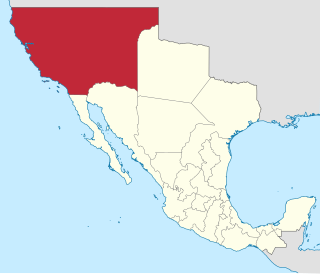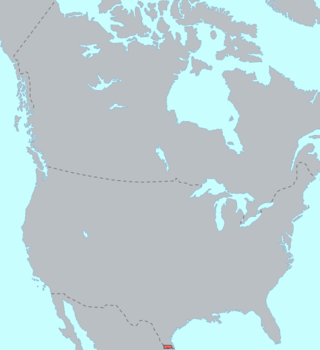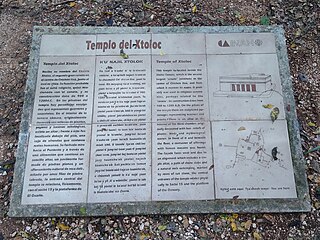Mexican states by population and percentage being indigenous speaking Mexicans.
Contents


Mexican states by population and percentage being indigenous speaking Mexicans.


| Rank | State | Speaking Population (2010) [1] | Percentage |
|---|---|---|---|
| 1 | 1,165,186 | 34.2% | |
| 2 | 537,516 | 30.3% | |
| 3 | 1,141,499 | 27.2% | |
| 4 | 196,060 | 16.7% | |
| 5 | 456,774 | 15.1% | |
| 6 | 359,972 | 15.1% | |
| 7 | 91,094 | 12.3% | |
| 8 | 601,680 | 11.7% | |
| 9 | 248,196 | 10.7% | |
| 10 | 644,559 | 9.4% | |
| - | 6,695,228 | 6.7% | |
| 11 | 49,963 | 5.1% | |
| 12 | 136,608 | 3.5% | |
| 13 | 104,014 | 3.5% | |
| 14 | 60,526 | 3.0% | |
| 15 | 376,830 | 2.8% | |
| 16 | 27,653 | 2.6% | |
| 17 | 60,310 | 2.5% | |
| 18 | 30,894 | 2.1% | |
| 19 | 31,388 | 2.0% | |
| 20 | 10,661 | 1.9% | |
| 21 | 29,585 | 1.8% | |
| 22 | 122,411 | 1.5% | |
| 23 | 41,005 | 1.5% | |
| 24 | 40,137 | 1.0% | |
| 25 | 23,426 | 0.9% | |
| 26 | 23,296 | 0.8% | |
| 27 | 51,702 | 0.8% | |
| 28 | 3,983 | 0.7% | |
| 29 | 4,924 | 0.4% | |
| 30 | 14,835 | 0.3% | |
| 31 | 6,105 | 0.2% | |
| 32 | 2,436 | 0.2% |

With a population of about 129 million in 2022, Mexico is the 10th most populated country in the world. It is the largest Spanish-speaking country in the world and the third-most populous country in the Americas after the United States and Brazil. Throughout most of the 20th century Mexico's population was characterized by rapid growth. Although this tendency has been reversed and average annual population growth over the last five years was less than 1%, the demographic transition is still in progress; Mexico still has a large youth cohort. The most populous city in the country is the capital, Mexico City, with a population of 8.9 million (2016), and its metropolitan area is also the most populated with 20.1 million (2010). Approximately 50% of the population lives in one of the 55 large metropolitan areas in the country. In total, about 78.84% of the population of the country lives in urban areas, and only about 21.16% in rural ones.

North America is a continent in the Northern Hemisphere almost entirely within the Western Hemisphere. North America is bordered to the north by the Arctic Ocean, to the east by the Atlantic Ocean, to the southeast by South America and the Caribbean Sea, and to the west and south by the Pacific Ocean. The region includes Canada, the Caribbean, Central America, Greenland, Mexico, and the United States.

The Spanish colonization of the Americas began in 1493 on the Caribbean island of Hispaniola after the initial 1492 voyage of Genoese mariner Christopher Columbus under license from the Queen Isabella I of Castile. These overseas territories of the Spanish Empire were under the jurisdiction of Crown of Castile until the last territory was lost in 1898. Spaniards saw the dense populations of indigenous peoples as an important economic resource and the territory claimed as potentially producing great wealth for individual Spaniards and the crown. Religion played an important role in the Spanish conquest and incorporation of indigenous peoples, bringing them into the Catholic Church peacefully or by force. The crown created civil and religious structures to administer the vast territory. Spanish colonists settled in greatest numbers where there were dense indigenous populations and the existence of valuable resources for extraction.

Alta California, also known as Nueva California among other names, was a province of New Spain formally established in 1804. Along with the Baja California peninsula, it had previously comprised the province of Las Californias, but was made a separate province in 1804. Following the Mexican War of Independence, it became a territory of Mexico in April 1822 and was renamed Alta California in 1824.

New Spain, officially the Viceroyalty of New Spain, or Kingdom of New Spain, was an integral territorial entity of the Spanish Empire, established by Habsburg Spain during the Spanish conquest of the Americas and having its capital in Mexico City. Its jurisdiction comprised a large area that included what is now Mexico, the Western and Southwestern United States in North America; Central America, the Caribbean, very northern parts of South America, and several territorial Pacific Ocean archipelagos.

Mestizo is a person of mixed European and indigenous American ancestry in the Spanish Empire.In certain regions such as Latin America, it may also refer to people who are culturally European even though their ancestors are Native American. The term was used as an ethno-racial exonym for mixed-race castas that evolved during the Spanish Empire. It was a formal label for individuals in official documents, such as censuses, parish registers, Inquisition trials, and others. Priests and royal officials might have classified persons as mestizos, but individuals also used the term in self-identification.

Over a thousand indigenous languages are spoken by the Indigenous peoples of the Americas. These languages cannot all be demonstrated to be related to each other and are classified into a hundred or so language families, as well as a number of extinct languages that are unclassified because of a lack of data.

Cholo is a loosely defined Spanish term that has had various meanings. Its origin is a somewhat derogatory term for people of mixed-blood heritage in the Spanish Empire in Latin America and its successor states as part of castas, the informal ranking of society by heritage. Cholo no longer necessarily refers only to ethnic heritage, and is not always meant negatively. Cholo can signify anything from its original sense as a person with one indigenous parent and one Mestizo parent, "gangster" in Mexico, an insult in some South American countries, or a "person who dresses in the manner of a certain subculture" in the United States as part of the cholo subculture.

The Nahuas are a group of the indigenous people of Mexico, El Salvador, Guatemala, Honduras, and Nicaragua. They comprise the largest indigenous group in Mexico and second largest in El Salvador. The Mexica (Aztecs) were of Nahua ethnicity, and the Toltecs are often thought to have been as well, though in the pre-Columbian period Nahuas were subdivided into many groups that did not necessarily share a common identity.

The region known as Hispanic America and historically as Spanish America is all the Spanish-speaking countries of the Americas. In all of these countries, Spanish is the main language, sometimes sharing official status with one or more indigenous languages or English, and Roman Catholicism is the predominant religion.

Zambo or Sambu is a racial term historically used in the Spanish Empire to refer to people of mixed Indigenous and African ancestry. Occasionally in the 21st century, the term is used in the Americas to refer to persons who are of mixed African and Indigenous American ancestry.

Mexicans are the citizens and nationals of the United Mexican States.
Latin Americans, sometimes referred to as Latinos, are the citizens of Latin American countries. Latin American countries and their diasporas are multi-ethnic and multi-racial. Latin Americans are a pan-ethnicity consisting of people of different ethnic and national backgrounds. As a result, some Latin Americans do not take their nationality as an ethnicity, but identify themselves with a combination of their nationality, ethnicity and their ancestral origins. Aside from the indigenous population, all Latin Americans have some Old World ancestors who arrived since 1492. Latin America has the largest diasporas of Spaniards, Portuguese, Africans, Italians, Lebanese and Japanese in the world. The region also has large German, French, Palestinian, Chinese and Jewish diasporas.

The Indigenous peoples of the Americas are the inhabitants of the Americas who have occupied parts of the Western Hemisphere since prior to arrival of European settlers in the 15th century.

Cotoname was a Pakawan language spoken by Native Americans indigenous to the lower Rio Grande Valley of northeastern Mexico and extreme southern Texas. Today it is extinct.

The United Mexican States has decided not to declare an official language, however Spanish is the de facto national language spoken by over 99% of the population making it the largest Spanish speaking country in the world. The government also recognizes 63 indigenous languages spoken in their communities out of respect, including Nahuatl, Mayan, Mixtec, etc.

Indigenous peoples of Mexico, Native Mexicans or Mexican Native Americans, are those who are part of communities that trace their roots back to populations and communities that existed in what is now Mexico before the arrival of Europeans.

Mexico, officially the United Mexican States, is a country in the southern portion of North America. It is bordered to the north by the United States; to the south and west by the Pacific Ocean; to the southeast by Guatemala, Belize, and the Caribbean Sea; and to the east by the Gulf of Mexico. Mexico covers 1,972,550 km2, making it the world's 13th-largest country by area; with a population of over 126 million, it is the 10th-most-populous country and has the most Spanish speakers. Mexico is organized as a federal republic comprising 31 states and Mexico City, its capital. Other major urban areas include Monterrey, Guadalajara, Puebla, Toluca, Tijuana, Ciudad Juárez, and León.

A tortilla is a thin, circular unleavened flatbread from Mexico originally made from maize hominy meal, and now also from wheat flour.